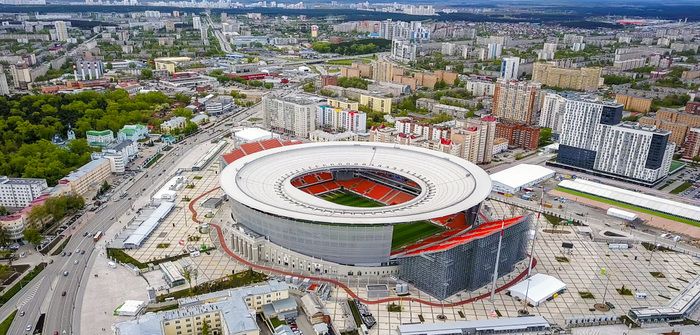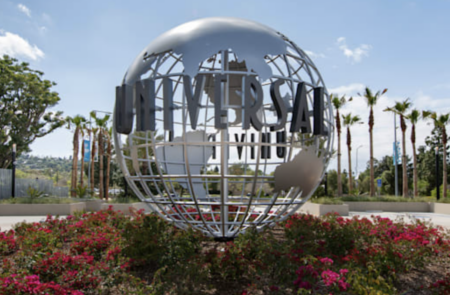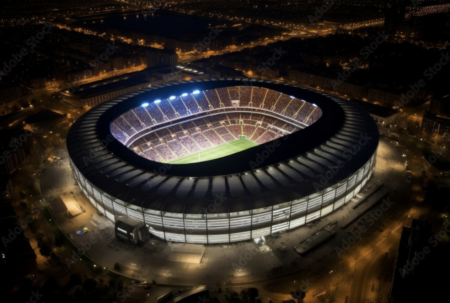Luzhniki Stadium, Moscow
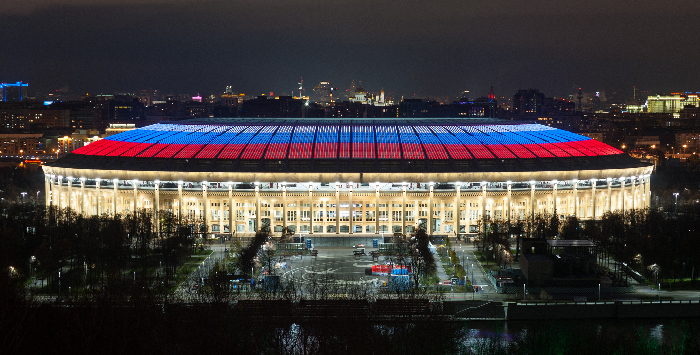
Capacity: 81,006
Completion: May 2017
With a rich history of hosting major events including the 1980 Olympic Games, 2008 UEFA Champions League final and the 2013 World Athletics Championships, Russia’s national stadium underwent a major renovation at a cost of US$288m, enabling it to host seven matches during the 2018 World Cup – including the opening game and final. Starting in 2013, building work was originally due to be completed by January 2017, though eventually finished in early 2018. This reconstruction saw the athletics track removed, enabling the stands to be reconfigured to bring fans closer to the pitch and increasing venue capacity by 3,000 seats. It will be the first ever World Cup final to be played on a pitch that isn’t 100% natural grass, thanks to a hybrid synthetic surface from SISGrass, which entwines 5% man-made fibers for extra durability.
Mordovia Arena, Saransk
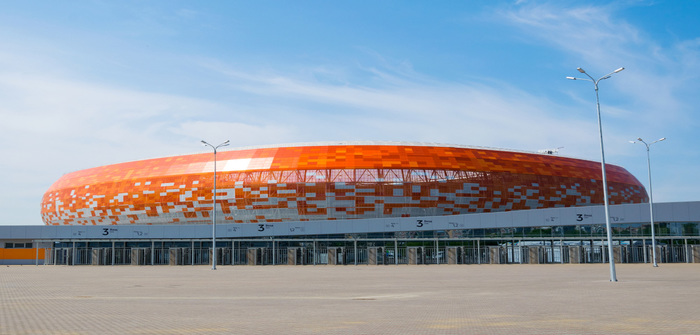
Capacity: 44,442
Completion: December 2017
Initial plans for a new stadium in Saransk called for a completion date in 2013. However, a later decision to include the stadium in Russia’s World Cup bid halted building work for more than a year. The increase in the required capacity led to a new design competition in 2013, with construction restarting in 2015. The latest design uses colors that honor the distinctive palette of Mordovia’s arts and crafts. In legacy mode, the stadium’s third tier can be dismantled, leaving space for a hall for volleyball and a fitness center, bringing the capacity of the US$241m venue to a more modest 25,000 seats.
Nizhny Novgorod Stadium, Nizhny Novgorod
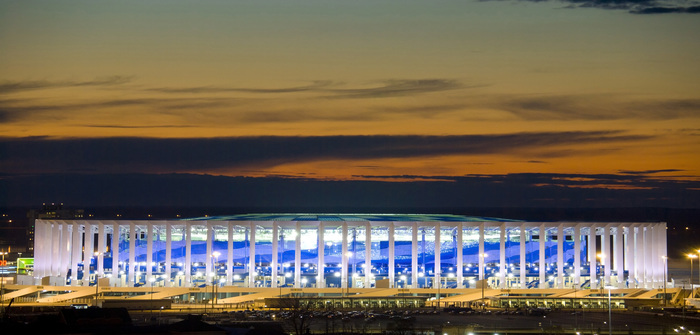
Capacity: 45,331
Completion: December 2017
This US$262m stadium is located close to the city’s historic districts and has been designed to provide a modern feel, inspired by the local environment.
The semi-transparent façade evokes wind and water, creating the appearance of waves around the stadium. Rising to a maximum height of 177ft, the stadium’s eye-catching façade surrounds the entire seating bowl. Following the tournament, the stadium will not only be home to FC Volga, but will also be widely used for other sports events, public entertainment shows and cultural events.
Kazan Arena, Kazan
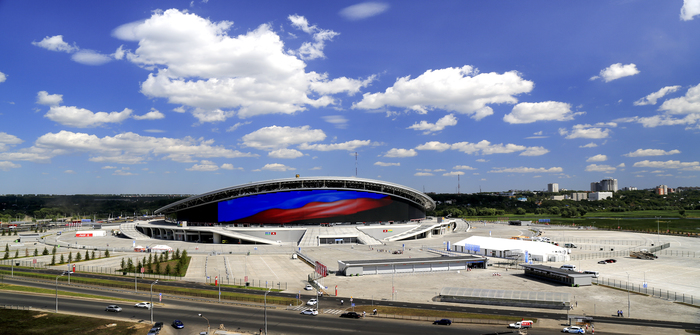
Capacity: 44,779
Opened: August 2013
Kazan Arena was originally constructed for the 2013 Summer University Games and has replaced Central Stadium as the city’s main soccer stadium. It boasts the world’s largest high-definition screen of its type – at nearly 40,000ft2 – located on the front façade of the stadium. Its legacy as a multi-use venue is already assured, having previously played host to the World Aquatics Championships, when a pair of temporary Olympic-size pools were constructed in the center of the field of play.
Kaliningrad Stadium, Kaliningrad
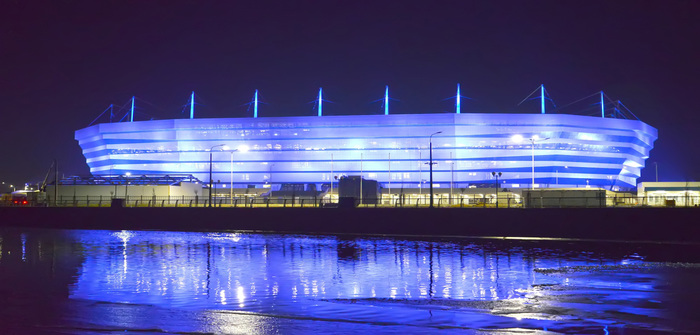
Capacity: 35,212
Completion: November 2017
It took until 2015 for construction of the US$267m future home of FC Baltika Kaliningrad to begin, but by April 2016 the stadium was already ready for the roof construction phase. The external façade is constructed using concrete and stained glass, along with perforated aluminum panels, resulting in a transparent blue and white skin that envelops the structure. The stadium incorporates three tiers of seating for the World Cup and, despite being the smallest of the 12 venues, capacity will be reduced to 25,000 once a temporary 10,000-seat section is dismantled after the tournament.
St Petersburg Stadium, St Petersburg
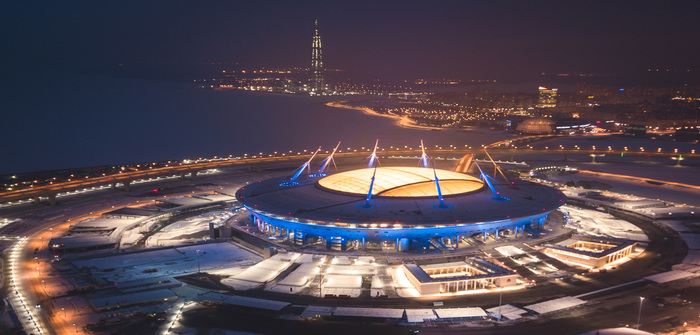
Capacity: 68,134
Completion: 2017
The future home of FC Zenit Saint Petersburg, more commonly known as Piter Arena, is Russia’s most expensive stadium to date, with a projected cost of US$587m. In 2014, prior to the decline in the value of the ruble, it was on track to be Russia’s first US$1bn stadium. Initial construction work started in 2006, but numerous delays mean that the stadium didn’t finish until 2017.
Spartak Stadium, Moscow
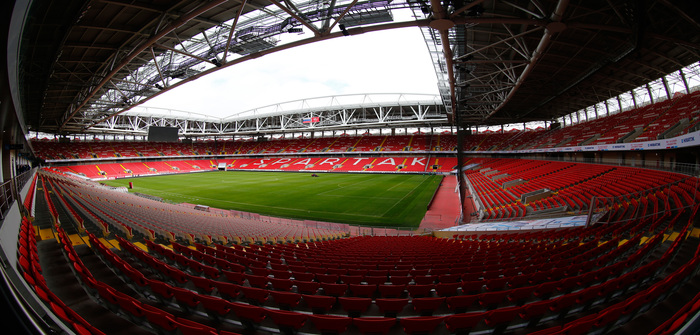
Capacity: 43,298
Opened: September 2014
Also known as the Otkritie Arena, this US$224m stadium became FC Spartak Moscow’s first permanent home in September 2014. The unique appearance of the stadium reflects the team’s diamond insignia – 600 colored glass panels overlap to create a curvilinear form, creating a wrap for the entire stadium. Outside the stadium, a new underground station has opened and a residential development will also be added to the surrounding area once the World Cup is over.
Rostov Arena, Rostov-on-Don
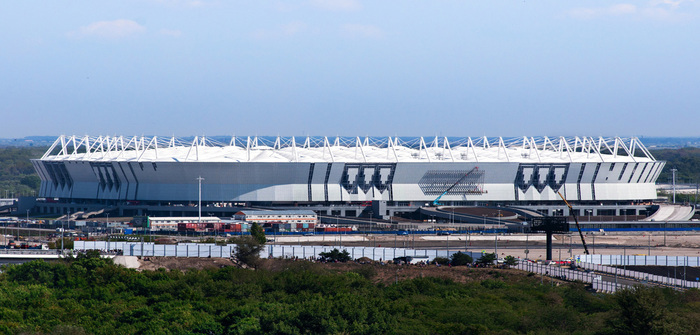
Capacity: 45,145
Completion: April 2018
The five-story, three-tiered Rostov Arena will become the new home for FC Rostov after the tournament, when the number of seats will be reduced to 37,885. The US$295m investment will produce a rectangular stadium, with a wave-like roof that reflects the meanderings of the Don River – the stadium sits on the river’s left bank.
Volgograd Arena, Volgograd
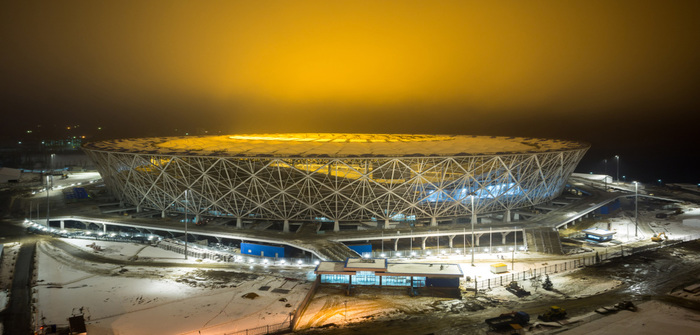
Capacity: 45,568
Completion: April 2018
The new US$252m Volgograd Arena, replaced the old Central Stadium and was built specifically for the World Cup. April 2016 saw the start of the construction of the fifth, and final, floor of the stadium – installation of the external latticed façades and initial elements of the cabled roof came later in the year. Legacy plans will see FC Rotor move in as a total of 10,508 seats are removed from the north and south stands and multifunctional commercial spaces are added.
Ekaterinburg Arena, Ekaterinburg
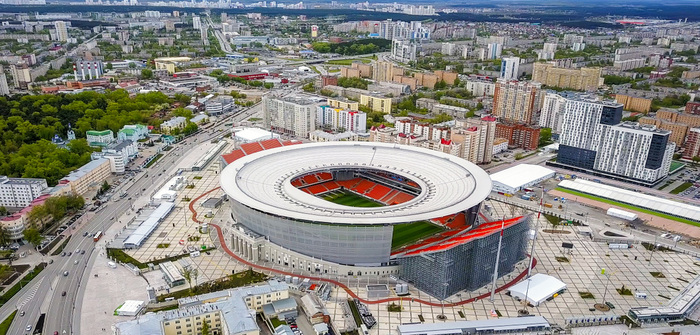
Capacity: 35,696
Completion: December 2017
FC Ural’s stadium, which was built in 1953, received the latest in a long line of refurbishments in time for Russia 2018, at an estimated cost of US$195m. The latest reconstruction program incorporated the stadium’s decorative Soviet-era façade in a design with the construction of a new roof and two temporary stands, both of which will be positioned outside the main structure. These collapsible sections will be removed after the conclusion of the World Cup, leaving a more suitable reduced capacity of 23,000 seats.
Samara Arena, Samara
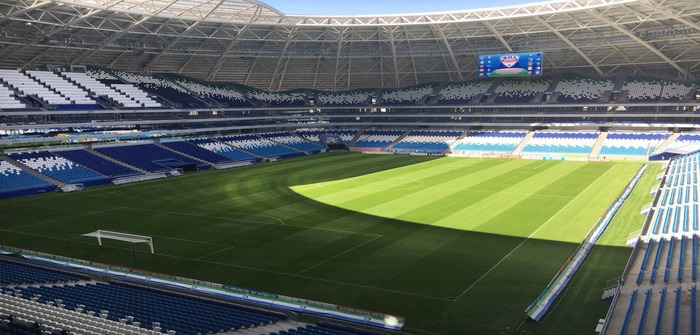
Capacity: 44,807
Completion: April 2018
With its 197ft-high dome, the design of the Samara Arena is intended to evoke thoughts of a spacecraft – reflecting the city’s relationship with aviation and space technology. Costing an estimated US$320m, construction began in July 2014 at a ceremony to place a time capsule at the site. Unlike a number of other new-builds, the stadium’s capacity will be maintained post-tournament, although temporary structures required for the World Cup will be removed to allow for landscaping work and a new promenade featuring sports facilities, hotels and a conference hall. FC Krylia Sovetov will then move into the venue.
Fisht Stadium, Sochi
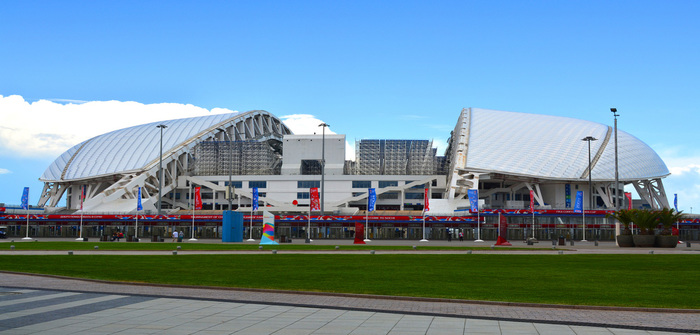
Capacity: 47,700
Completion: Summer 2016
Originally built as the venue for the opening and closing ceremonies of the Sochi 2014 Winter Olympic and Paralympic Games, Fisht Stadium has been adapted to become a multi-use venue. Designed to give the appearance of a snow-capped mountain, the stadium takes its name from nearby Mount Fisht. The central section of the original roofing that previously covered the field of play was removed as part of the stadium renovations at a cost of around US$45.5m, leaving just the east and west stands covered, while temporary seating is also being added behind the goals to boost the venue’s capacity.


